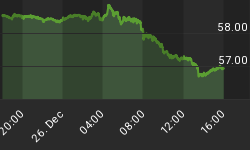
Originally posted at Sprott Money February 16, 2017
World Gold Council data released earlier this month reveal a paradox. Demand hit 4,389 tons during 2016, but mines produced only 3,236 tons. Yet despite differing supply demand fundamentals, gold prices rose by only 9%. A supply squeeze that size, should have produced far bigger price action.
What gives?
As with many of life's mysteries, a good place to start is with Chinese thinkers. No, not Confucius, Lao Tse, or even Sun Tzu. I am talking about Bruce Lee.
In a competitive investing world, in which price discovery, financial reporting and economic data are systematically distorted, the best parallels are with competitive boxing, which is governed by the Marquis of Queensbury rules, and a street brawl.
"When you talk about fighting with no rules," said the late martial artist, in the lost Bruce Lee interview, "you had better learn to use every part of your body. Your feet. Your elbows. Thumbs. Everything."
That sage advice increasingly applies to an investing world, in which supply-demand fundamentals, as measured by official statistics, don't tell you much.
To avoid being fleeced, gold investors - indeed all investors - need to know a bit about everything. Some examples:
Economics and central bank manipulation
Most seasoned investors have caught on that the US Federal Reserve has been intentionally manipulating housing, bond, equities and other asset prices higher. Ben Bernanke, a former Fed chair, and Richard Fisher, former president of the Dallas Fed, have admitted as much.
Less well-known, as Bill Gross recently pointed out, is that while Fed manipulations have tapered off, European and Japanese central banks continue to buy $150 billion a month in assets.
This has swelled global balance sheets to $12 trillion and distorted prices throughout the system. Ten-year bond rates would be nearly 3.5% (instead of 2.45%) Gross suggests, without the manipulations.
If interest rates were 43% (1.05 percentage points) higher, this would bring down the implied value of stocks (by more than 30%, according to this writer's back of the envelope calculation).
The question gold investors need to ask themselves is how long the central bank manipulations can continue. And which asset classes would best hold their value if current unconventional monetary policy proves to be a bust?
History: no fiat (printed) currency has ever survived
Good investors also need to know a bit about history, which today is taught by professors who grew up in the 1960s. Today's crop of politically-correct academics teach that the most interesting thing about the Roman Empire, are its public baths, mosaics and approaches to women's rights. Greece, for its part, is taught for its poetry, philosophy and rhetoric.
Hints regarding how these empires ruled much of the earth, for nearly 2,000 years, might be in a footnote somewhere.
Few ivy league professors today will explain what happened in both empires, and in 1780s France and 1920s Germany, when governments engaged in precipitous currency debasement, that recalls what we are starting to see in Western countries.
Before investing in gold, investors need to assess whether the yellow metal, which has acted as money for at least 3,000 years (many claim longer), has better staying power than paper and digital currency.
More important, how long will it take for the disparity to show?
Math: the US dollar has lost 98% of its value since 1933
Asking investors to learn math, which is so badly taught in Western schools, that the public is essentially innumerate, may be asking a bit much. But one example demonstrates its importance.
In 1933, just prior to the US government's confiscation of Americans' gold holdings, an ounce was worth US $20. Today (Feb 15th EOD) an ounce of gold is worth $1,234. That means a dollar buys less than 1/50th as much gold as it did back then (1.6%), and has lost more than 98% of its value.
Worse, almost all that decline occurred since 1971, when the United States, led by President Richard Nixon, defaulted on its international obligations to back the dollar with gold.
Before investing in gold, investors will need to assess whether US dollar debasement will continue, (in truth this is generally accepted) and calculate what pace that will occur.
Complexities surrounding outstanding derivatives contracts, ETFs, and other "paper gold," complicate things even further. Many investors who have been following markets all their lives remain baffled.
That said, one question seems more straightforward. Does one trust all of one's assets to a paper and digital-based system, run by politicians, central bankers and ivy-league economists?
Or does one hedge one's portfolio with real economic assets, of the kind that Lao Tse, Confucius, Sun Tzu and Bruce Lee would understand?
















